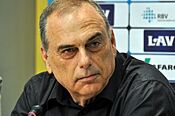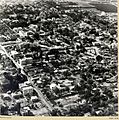Petah Tikva facts for kids
Quick facts for kids
Petah Tikva
פתח תקווה
|
||
|---|---|---|
|
City (from 1937)
|
||
| Hebrew transcription(s) | ||
| • Also spelled | Petah Tiqwa (official) Petach Tikva, Petach Tikvah (unofficial) |
|
 |
||
|
||
| Country | ||
| District | Central | |
| Founded | 1878 | |
| Area | ||
| • Total | 35,868 dunams (35.868 km2 or 13.849 sq mi) | |
| Population
(2022)
|
||
| • Total | 255,387 | |
| Name meaning | Opening of hope | |
Petah Tikva is a city in the central part of Israel. Its name means "Opening of Hope." It is also known as Em HaMoshavot, which means "Mother of the Moshavot" (early Jewish settlements).
The city was founded in 1878 by Jewish settlers from Europe. It became a lasting settlement in 1883 with help from Baron Edmond de Rothschild. Petah Tikva is located about 10.6 kilometers (6.6 miles) east of Tel Aviv.
In 2022, Petah Tikva had a population of 255,387 people. This makes it the fifth-largest city in Israel. It covers an area of about 35.9 square kilometers (15 square miles). Petah Tikva is part of the larger Tel Aviv Metropolitan Area.
Contents
- What's in a Name?
- A Look Back: History of Petah Tikva
- Economy and Industry
- Getting Around: Transportation
- Learning and Faith: Schools and Religious Institutions
- Fun Places: Landmarks and Cultural Institutions
- Sports in the City
- Digging Up the Past: Archaeology
- Famous People from Petah Tikva
- Sister Cities
- Images for kids
- See also
What's in a Name?
The name Petah Tikva means "Door of Hope." This name comes from a Bible verse in Hosea 2:15. The verse talks about making the "valley of Achor a door of hope." The settlers first wanted to build the town in the Achor Valley, near Jericho. Even though they couldn't settle there, they kept the name.
A Look Back: History of Petah Tikva
The area where Petah Tikva stands has a long history. An ancient mound called Tell Mulabbis shows signs of people living there in Roman, Byzantine, and later times.
Petah Tikva was founded in 1878 by Jewish settlers from Europe. These founders included Yehoshua Stampfer and Yoel Moshe Salomon. It was the first modern Jewish farming settlement in the area. This is why it's called the "Mother of the Moshavot."
The settlers first tried to buy land near Jericho. However, the ruler, Abdul Hamid II, stopped them from settling there. They still kept the name Petah Tikva as a sign of their dreams.
In 1878, the founders found land northeast of Jaffa. This land was near a village called Mulabes. They bought about 3,500 dunams (about 3.5 square kilometers) of land. More settlers arrived the next year and bought more land. The Ottoman Sultan allowed the purchase because the land was not very good.
In 1880, a serious illness called malaria spread. This forced many settlers to leave the area by 1881 or 1882. Those who stayed moved south to Yehud.
New Beginnings and Challenges
In 1883, new immigrants from the Bilu movement came and settled Petah Tikva again. Some of the first families also returned. With money from Baron Edmond de Rothschild, the swamps were drained. This helped the settlement become more stable.
In 1886, Arab farmers from a nearby village attacked the Jewish settlement. This was one of the first violent clashes in the area.
Around 1906, David Ben Gurion, who would later become Israel's first Prime Minister, lived in Petah Tikva for a few months. He worked in the orange groves. The town had about 1,000 people, half of whom were farmers.
During World War I, Petah Tikva became a safe place for people from Tel Aviv and Jaffa. These cities were forced to evacuate by the Ottoman rulers. Petah Tikva faced difficulties because it was between the Ottoman and British armies.
Under British Rule
In the early 1920s, industries started to grow in Petah Tikva. In 1921, the British government made Petah Tikva a local council. In May 1921, the city was attacked, and four Jewish residents died.
In 1927, Petah Tikva signed a peace agreement with its Arab neighbors. Because of this, the city was not affected by the riots that happened in Palestine in 1929.
By 1931, Petah Tikva had 6,880 people living in 1,688 houses. In 1937, it officially became a city. Its first mayor was Shlomo Stampfer, whose father was one of the city's founders.
Petah Tikva was a major center for growing citrus fruits. It was seen as an important place for using electricity for irrigation.
After Israel's Independence
After the 1948 Arab–Israeli War, Petah Tikva grew larger. Several nearby villages, like Amishav and Ein Ganim, became part of the city. This increased its population to 22,000.
The city has faced challenges due to the ongoing conflict in the region. This included attacks in 1977 and during the Second Intifada.
As of 2018, Petah Tikva had over 240,000 people. It is the third most populated city in the Tel Aviv Metropolitan Area. The city is divided into 33 neighborhoods.
Economy and Industry
Petah Tikva has the second-largest industrial area in Israel, after Haifa. Its industries are located in three main zones: Kiryat Aryeh, Kiryat Matalon, and Segula. These zones produce textiles, metal goods, plastics, food, and rubber products.
Many high-tech companies and new businesses have moved to Petah Tikva. Major companies like Oracle Corporation, IBM, Intel, and GlaxoSmithKline have their Israeli offices here. The largest data center in Israel is also in Petah Tikva.
Teva, the world's largest maker of generic medicines, has its main office in Petah Tikva. Osem, a leading food company, opened in Petah Tikva in 1976. Strauss, another big food company, is also based here.
The large citrus groves that once surrounded Petah Tikva have mostly been replaced by new buildings. Many new neighborhoods are being built in and around the city.
Petah Tikva is also a hub for many communications companies. The main offices of Bezeq International and 012 Smile (an internet provider) are located here. Arutz Sheva, a media network, has an internet radio studio and printing press in Petah Tikva.
Getting Around: Transportation
Petah Tikva has many ways to get around.
Buses
Many Egged buses stop in Petah Tikva, connecting it to other cities. The Kavim company runs local buses within the city. The Dan bus company operates lines to nearby cities like Ramat Gan and Tel Aviv. The main bus station is the Petah Tikva Central Bus Station.
Trains
Israel Railways has two train stations in the northern part of the city: Segula and Kiryat Aryeh. A new central train station is planned for the future.
Roads
Petah Tikva is near three major highways in Israel:
- Geha Highway (Highway 4) to the west.
- Trans-Samaria Highway (Highway 5) to the north.
- Trans-Israel Highway (Highway 6) to the east.
Cool Bridge

A special pedestrian bridge designed by Santiago Calatrava is in Petah Tikva. It is 50 meters (164 feet) long and connects Rabin Hospital to a shopping mall, homes, and a park. The bridge is made mostly of steel with a glass walkway.
Light Rail
The Red Line of the Tel Aviv light rail system connects Petah Tikva to other cities like Bnei Brak and Tel Aviv. One branch of the Red Line goes to an underground station at Kiryat Aryeh. Another branch continues to the Petah Tikva Central Bus Station. The light rail opened in August 2023.
Learning and Faith: Schools and Religious Institutions
Petah Tikva has about 300 schools, from kindergartens to high schools. These schools serve different communities, including secular and religious groups. Over 43,000 students attend these schools.
The city has seventeen public libraries. The main library is located in the city hall building.
Petah Tikva is home to about 70,000 Orthodox Jews. There are 300 synagogues in the city, including the 120-year-old Great Synagogue. There are also eight mikvaot (ritual baths) and two major religious schools called yeshivot.
Petah Tikva has two cemeteries: Segula Cemetery and Yarkon Cemetery.
Fun Places: Landmarks and Cultural Institutions
Petah Tikva's Independence Park has several attractions:
- A zoo.
- The Museum of Man and Nature.
- A memorial for victims of the 1921 Arab riots.
- An archaeological display.
- Yad Labanim soldiers' memorial.
- A local history museum.
- A Holocaust museum.
- The Petah Tikva Museum of Art.
Sports in the City
The main sports stadium in Petah Tikva is the 11,500-seat HaMoshava Stadium. The city has two main football (soccer) teams: Hapoel Petah Tikva and Maccabi Petah Tikva.
In 2014, Hapoel Petah Tikva's women's football team welcomed five Arab-Israeli women to play. One of them is now a team captain.
Digging Up the Past: Archaeology
In 2006 and 2007, archaeologists dug at a site called Khirbat Mulabbis in Petah Tikva. They found remains from different time periods, including the Byzantine period (4th-7th centuries CE) and the Ottoman period.
Famous People from Petah Tikva
Many notable people have connections to Petah Tikva, including:
- Gila Almagor (born 1939), actress and author
- Yehuda Amichai (1924–2000), poet
- Gal Gadot (born 1985), actress and model
- Avraham Grant (born 1955), football coach
- Dan Shechtman (born 1941), winner of the Nobel Prize for Chemistry
Sister Cities
Petah Tikva is twinned with several cities around the world. These "sister cities" work together to promote cultural ties and understanding.
 Bacău, Romania
Bacău, Romania Cherkasy, Ukraine
Cherkasy, Ukraine Chernihiv, Ukraine
Chernihiv, Ukraine Chicago, United States
Chicago, United States Las Condes, Chile
Las Condes, Chile Gabrovo, Bulgaria
Gabrovo, Bulgaria Gyumri, Armenia
Gyumri, Armenia Kadıköy, Turkey
Kadıköy, Turkey Koblenz, Germany
Koblenz, Germany Międzyrzec Podlaski, Poland
Międzyrzec Podlaski, Poland Șimleu Silvaniei, Romania
Șimleu Silvaniei, Romania Taichung, Taiwan
Taichung, Taiwan Trondheim, Norway
Trondheim, Norway Norrköping, Sweden
Norrköping, Sweden
colwidth=20em}}
Images for kids
-
The IBM building in Petah Tikva
See also
 In Spanish: Petaj Tikva para niños
In Spanish: Petaj Tikva para niños






















